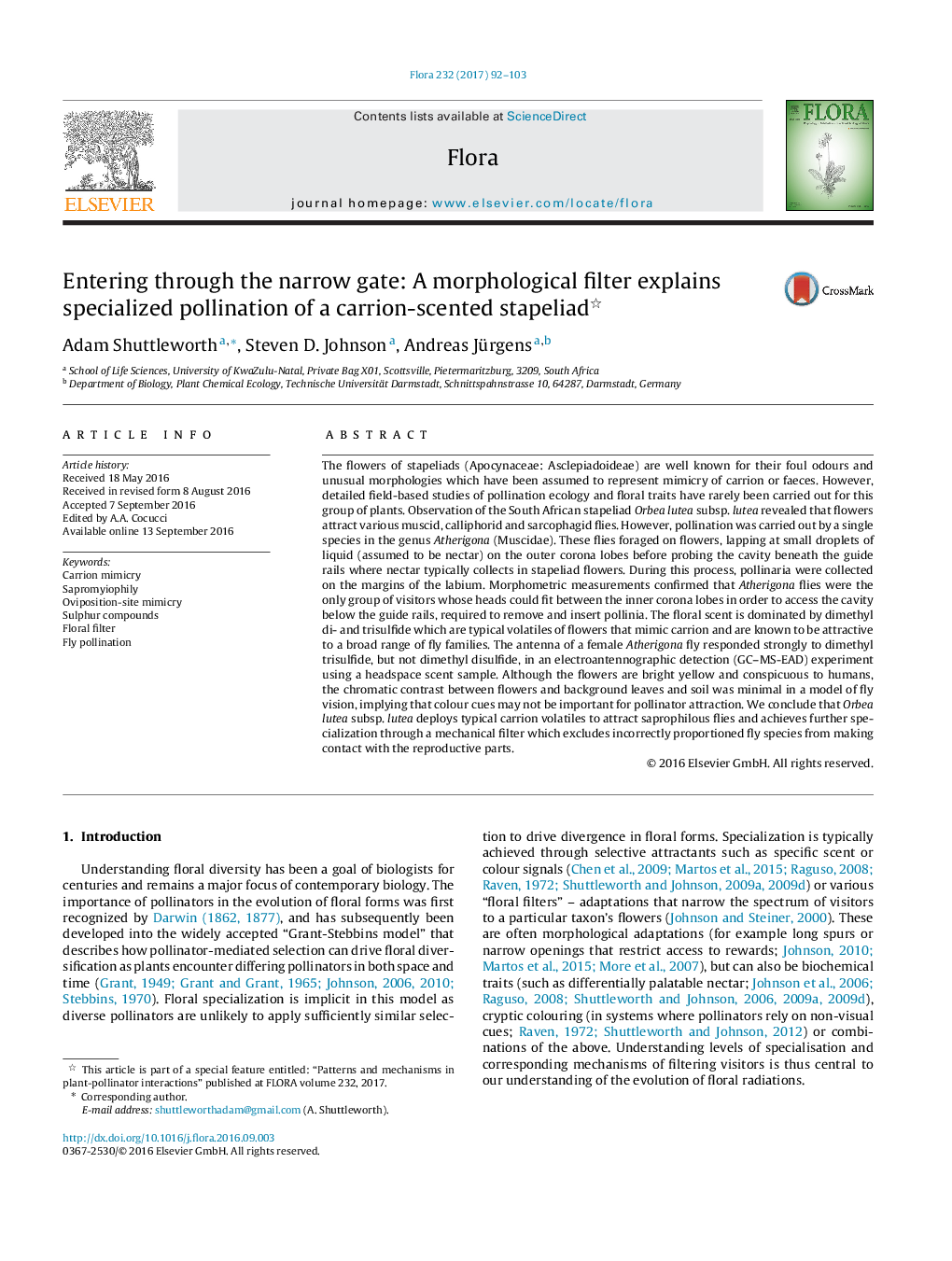| کد مقاله | کد نشریه | سال انتشار | مقاله انگلیسی | نسخه تمام متن |
|---|---|---|---|---|
| 5532462 | 1549927 | 2017 | 12 صفحه PDF | دانلود رایگان |
- Orbea lutea subsp. lutea is pollinated by a single species of Atherigona (Muscidae).
- Pollinaria are attached to the labium while flies probe for nectar.
- Flowers emit carrion-associated volatiles to selectively attract saprophilous flies.
- Further specialization is achieved with a morphological filter.
- Floral colour, as perceived by flies, is similar to the background.
The flowers of stapeliads (Apocynaceae: Asclepiadoideae) are well known for their foul odours and unusual morphologies which have been assumed to represent mimicry of carrion or faeces. However, detailed field-based studies of pollination ecology and floral traits have rarely been carried out for this group of plants. Observation of the South African stapeliad Orbea lutea subsp. lutea revealed that flowers attract various muscid, calliphorid and sarcophagid flies. However, pollination was carried out by a single species in the genus Atherigona (Muscidae). These flies foraged on flowers, lapping at small droplets of liquid (assumed to be nectar) on the outer corona lobes before probing the cavity beneath the guide rails where nectar typically collects in stapeliad flowers. During this process, pollinaria were collected on the margins of the labium. Morphometric measurements confirmed that Atherigona flies were the only group of visitors whose heads could fit between the inner corona lobes in order to access the cavity below the guide rails, required to remove and insert pollinia. The floral scent is dominated by dimethyl di- and trisulfide which are typical volatiles of flowers that mimic carrion and are known to be attractive to a broad range of fly families. The antenna of a female Atherigona fly responded strongly to dimethyl trisulfide, but not dimethyl disulfide, in an electroantennographic detection (GC-MS-EAD) experiment using a headspace scent sample. Although the flowers are bright yellow and conspicuous to humans, the chromatic contrast between flowers and background leaves and soil was minimal in a model of fly vision, implying that colour cues may not be important for pollinator attraction. We conclude that Orbea lutea subsp. lutea deploys typical carrion volatiles to attract saprophilous flies and achieves further specialization through a mechanical filter which excludes incorrectly proportioned fly species from making contact with the reproductive parts.
Journal: Flora - Volume 232, July 2017, Pages 92-103
